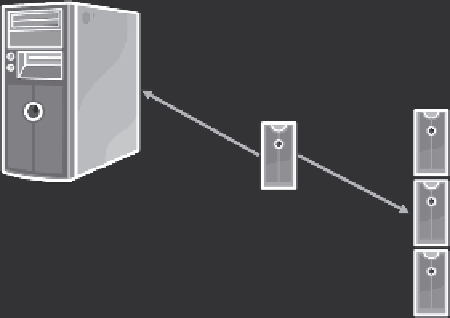Database Reference
In-Depth Information
Scaling up: run your solution on bigger server
Scale up
Scale out
Scaling out: run your solution on several servers
FIGURE 9.1
Database scalability options.
data management world. In particular, when the application load increases, there are
two main options for achieving scalability at the database tier that enables the appli-
cations to cope with more client requests (Figure 9.1) as follows:
1.
Scaling up
: aims at allocating a bigger machine to act as database servers.
2.
Scaling out
: aims at
replicating
and
partitioning
data across more machines.
In fact, the scaling up option has the main drawback that large machines are often
very expensive and eventually a physical limit is reached where a more powerful
machine cannot be purchased at any cost. Alternatively, it is both extensible and
economical-especially in a dynamic workload environment-to scale out by add-
ing storage space or buying another commodity server, which fits well with the new
pay-as-you-go
philosophy of cloud computing.
Recently, a new generation of low-cost, high-performance database software has
emerged to challenge the dominance of relational database management systems. A
big reason for this movement, named as
NoSQL
(Not Only SQL), is that different
implementations of web, enterprise, and cloud computing applications have different
database requirements (e.g., not every application requires rigid data consistency).
For example, for high-volume web sites (e.g., eBay, Amazon, Twitter, Facebook),
scalability and high availability are essential requirements that cannot be compro-
mised. For these applications, even the slightest outage can have significant financial
consequences and impacts customers' trust.
In general, the
CAP
theorem [15,34] and the
PACELC
model [1] describe the
existence of direct tradeoffs between consistency and availability as well as con-
sistency and latency. For example, the
CAP
theorem shows that a distributed data-
base system can only choose at most two out of three properties:
C
onsistency
,
A
vailability
, and
tolerance to
P
artitions
. Therefore, there is a plethora of alterna-
tive consistency models, which have been introduced for offering different per-
formance tradeoffs such as
session guarantees
,
causal consistency
[7],
causal+
consistency
[48], and
parallel snapshot isolation
[57]. In practice, the new wave of

Search WWH ::

Custom Search